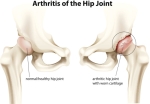Home »
Blog » Platelet-Rich Plasma (PRP)
| Stem Cell, PRP, Acupuncture in Queens & Long Island, New York
Platelet-rich Plasma (prp) | Stem Cell, PRP, Acupuncture in Queens & Long Island, New York
To understand why stem cell platelet-rich plasma or co-transplantation of Adipose-derived mesenchymal stem cells and PRP is such a remarkable idea in regenerative medicine, let’s spend a little time looking at the mechanics of PRP.
Read more
The big stumbling block for PRP is insurance acceptance. Right now, the insurance companies gleefully ignore the 0232T code – the CPT code for Platelet-Rich Plasma injections, with or without image guidance including its harvesting and preparation. But as they’ll soon realize, not accepting PRP injections is actually costing them a lot of money down the road. Many physicians believe that it’s only a matter of time before the insurance start accepting it.
Read more
The human body is an amazing machine that has the capability to heal itself. Platelet-rich plasma (PRP) and stem cell therapies are two exciting regenerative medical treatments that are changing the face of medicine. But while there are many similarities between PRP and stem cell therapies, there are a number of differences, too. Read on to learn about these two treatments that are changing how we heal.
Read more
Most cases of lumbar herniated disc symptoms resolve on their own within six weeks, so patients are often advised to start with non-surgical treatments. However, this can vary with the nature and severity of symptoms.
Read more
Hip osteoarthritis (OA) causes the cartilage that cushions your joints to be lost, resulting in pain and stiffness. Your doctor will be able to provide recommendations based on your condition. The treatments range from conservative to invasive. Conservative treatments include exercising and stretching. Invasive treatments include hip replacement surgery. All these treatments can help manage pain and improve mobility.
Read more
Arthritis symptoms can keep you from going about your everyday activities. The pain and inflammation may still persist despite medical intervention. To get relief, more and more people with arthritis are seeking a natural approach by using herbal remedies. Certain herbs may have anti-inflammatory properties that can help with rheumatoid arthritis (RA) by reducing pain in all forms of the disease. Still, there is a lack of scientific evidence supporting such claims. Before you treat arthritis the “natural” way, make sure you talk to a doctor first to avoid life-threatening side effects.
Read more
The goal of medical treatments is to reduce pain, but these treatments do not change the underlying source of pain. A doctor will typically prescribe medical treatments alongside a physical therapy program or another regimen.
Read more
Age, poor posture, and injury weaken spinal discs, causing cracks or tears to develop in the disc wall over time. Because spinal discs are filled with small nerve endings, these tears can develop into sources of chronic back pain in many patients. The adult disc has a limited blood supply, and therefore poor inherent healing potential. Conventional treatments for degenerated discs, which include physical therapy, anti-inflammatory medications, and spinal fusion surgery, are often not effective in the long-term and can come with complications.
Read more
PRP is short for Platelet Rich Plasma. PRP is blood plasma with concentrated platelets. The concentrated platelets found in PRP contain huge reservoirs of bioactive proteins, including growth factors that are vital to initiate and accelerate tissue repair and regeneration. These bioactive proteins initiate connective tissue healing, bone regeneration, and repair, promote the development of new blood vessels and stimulate the wound healing process.
Read more
Just about everyone feels pain from time to time. When you cut your finger or pull a muscle, pain is your body's way of telling you something is wrong. Once the injury heals, you stop hurting. Chronic pain is different. Your body keeps hurting for weeks, months, or even years after the injury. Doctors often define chronic pain as any pain that lasts for 3 to 6 months or more.
Read more
Love this Post? Spread the World






















